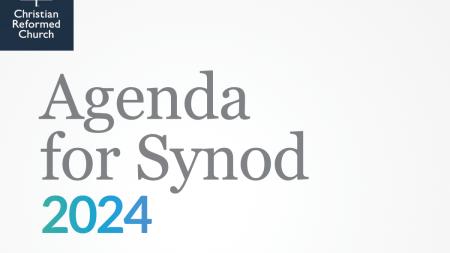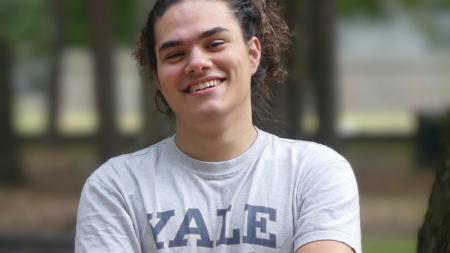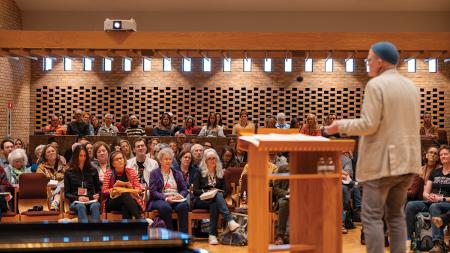Creating a Cancer Education Curriculum for Kids

How do you explain cancer to a small child? What is appropriate to tell a child about why his or her mom or best friend is sick all the time?
Calvin College biology professor Amy Wilstermann has been working with her students and local health care professionals to develop a curriculum for younger students about cancer education.
Wilstermann had been meeting with pediatric oncology nursing staff at Helen DeVos Children’s Hospital in Grand Rapids, Mich. to discuss how to bring this discussion to the elementary classroom. This turned into a collaboration between the hospital and Wilstermann.
A few years ago, Wilstermann came to Grand Rapids Christian Schools and did a workshop on cells and cancer.
She explained to pre-K through fifth-grade students how cancer cells are “cells gone bad” and the science behind cancer. It was at this time that she realized that there are not many scientific resources for young children about cancer.
“A lot of the materials deal with feelings, and they are not a lot about the science behind cancer,” Wilstermann remarked about current available cancer curricula. “We want to break down some of the unknown and give kids language to ask questions about it.”
Drawing on experience
Wilstermann and her student researchers have worked to develop many lesson plans that focus on the scientific aspect of cancer. One student on this team is Calvin senior Sara Conrad, a special education major with a minor in science education.
Conrad herself is a survivor of pediatric cancer and has used her story to help develop the curriculum.
Conrad has helped pilot some of the lessons in area schools. “She talked about what causes cancer and told her own story,” said Wilstermann. “The kids were just glued to her and everything she said.”
These lesson plans include everything for effective teaching on the topic. Included are background materials, step-by-step lessons and further resources. All lessons also meet state and national science standards.
One lesson uses the analogy of cooking to describe cell reproduction. “We explained that the DNA instructions sometimes go wrong like a recipe gone wrong,” Wilstermann said.
She said the group added extra things to the recipe such as rocks and other materials to demonstrate their point.
Learning and sharing
Continued funding of the project has been a challenge, however.
Wilstermann said in the world of philanthropy money is often given towards cancer research, but these foundations want results.
“We need money to fund students and to fund their time to go pilot these lessons and get feedback,” said Wilstermann. “Agencies like to purchase stuff and not time.”
Through the collaboration with Helen DeVos Children’s Hospital, Wilstermann hopes to make these lesson plans widely available and create a library of resources that could be easily accessible to teachers throughout the country.
“Eventually we’d like to get this out on the web in a place where teachers throughout the U.S. can find age-appropriate material,” said Wilstermann.


